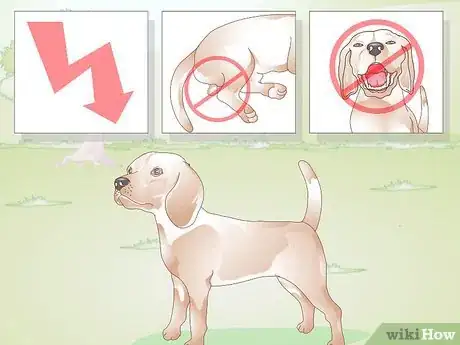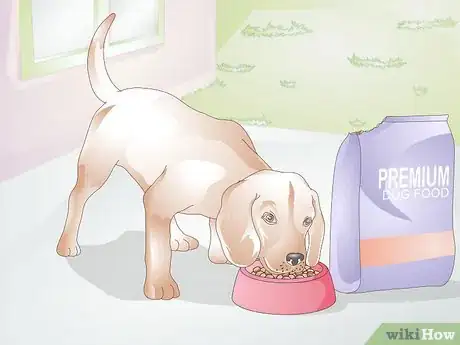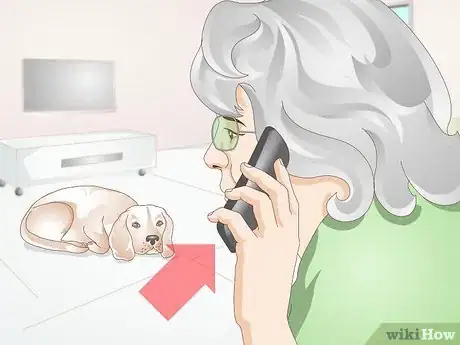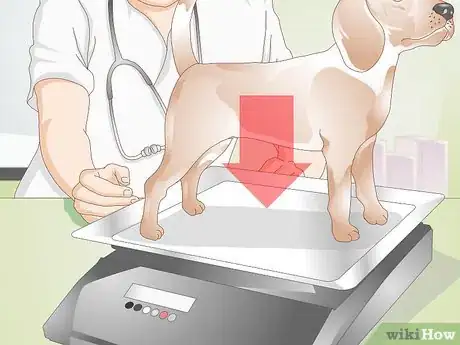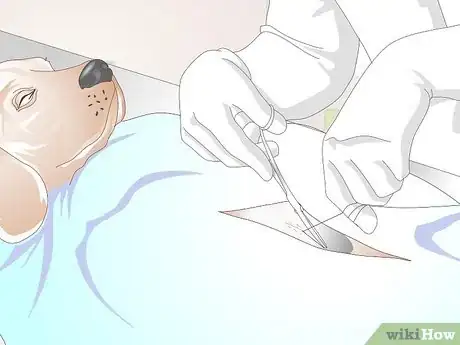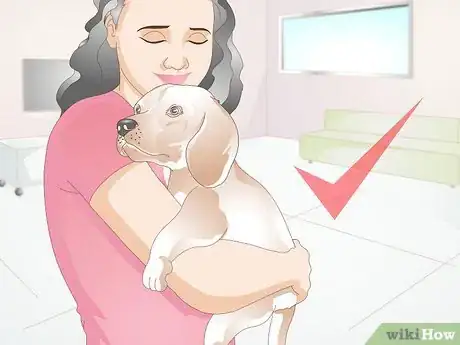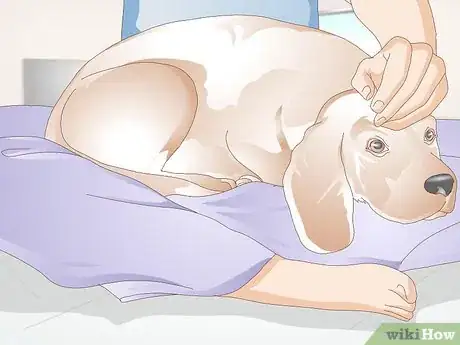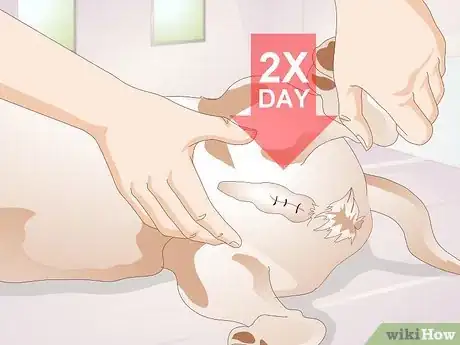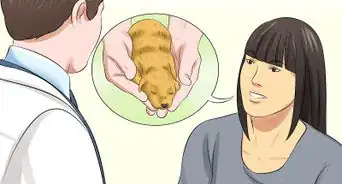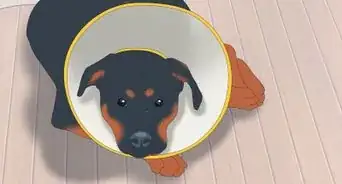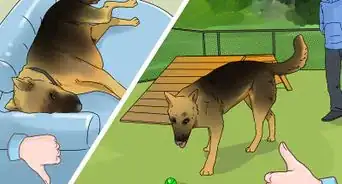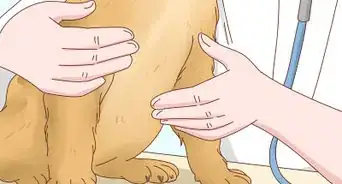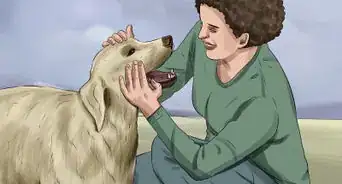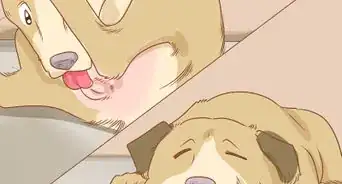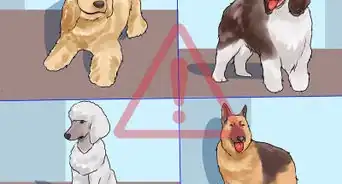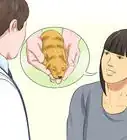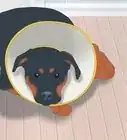This article was co-authored by Pippa Elliott, MRCVS. Dr. Elliott, BVMS, MRCVS is a veterinarian with over 30 years of experience in veterinary surgery and companion animal practice. She graduated from the University of Glasgow in 1987 with a degree in veterinary medicine and surgery. She has worked at the same animal clinic in her hometown for over 20 years.
wikiHow marks an article as reader-approved once it receives enough positive feedback. In this case, 83% of readers who voted found the article helpful, earning it our reader-approved status.
This article has been viewed 65,394 times.
Neutering a male dog is the process of surgically removing the testicles, along with associated structures, which are responsible for sperm production and secretion of the hormone testosterone.[1] While each veterinary clinic has its own routine, typically a neuter surgery will involve pre-operation preparation, the surgery, and then recovery. As this is a surgical procedure, it is only legally preformed at a veterinary clinic. Home removal constitutes animal cruelty and can kill a dog due to blood loss or infection. When getting your dog neutered it's important to know the benefits of neutering, the steps involved in the surgical procedure, and surgery aftercare.
Steps
Getting Your Dog Neutered
-
1Understand why it is important to neuter your dog. There are three main benefits to neutering a male dog. These include a decrease in unwanted puppies, medical benefits to the neutered dog, and a reduction in negative behaviors associated with intact (unneutered) dogs.
- Population control. A male dog that is neutered cannot produce any offspring. There already are 3.7 million unwanted pets that are euthanized (put to sleep) in the United States each year. By neutering your dog you take away the possibility of him contributing to this overwhelming problem.
- Medical benefits. By removing the testicles any cancer or disease that affects these organs is prevented. Also, as a male dog ages it enlarges and it can become infected. Neutering prevents both of these problems and it decreases the chance of your dog developing prostate cancer.[2]
- Negative behaviors. Intact male dogs develop behaviors that most people find repugnant. These include urine marking, aggression, roaming (to find females to mate with), and mounting behaviors.[3] While neutering can completely eliminate these tendencies it can greatly reduce the occurrence and make behavior training a bit easier to perform.
-
2Make sure your dog is healthy enough for surgery. You need to make sure your dog is healthy enough to undergo anesthesia, as it will be sedated and under anesthesia during the surgery. This always carries a little risk to the dog, so be sure your dog is healthy.
- Proper feeding, exercise, and vaccinations will go a long way to ensure your dog is as healthy as possible.
Advertisement -
3Schedule the surgery. You will need to call your veterinary clinic or hospital to schedule a surgical appointment. They will give you their pre-operation protocol, which generally includes withholding food the night before surgery and discontinuation of certain medications.
- They will also let you know if your dog will be able to go home the day of surgery or if they prefer to keep them overnight for observation.
-
4Bring your dog in for surgery. When you bring your dog to the veterinary office the day of surgery, your dog will be weighed and examined to make sure it is ready for surgery. If so, the dog will then be prepared for surgery.
- This generally includes giving a sedative, placing a tube down the windpipe, putting the dog on anesthesia, putting in an IV (in the vein) line for fluids and medication administration, and shaving and cleansing of the surgery site.
-
5Understand what is involved with the neutering surgery. The operation itself is straightforward. An incision will be made either directly in the skin on top of the testicles or immediately forward of the testicles. Each testicle will be teased from the body, the blood vessels and attachments will be “tied off” with suture material, and then the testicles will be removed.
- After carefully making sure there is no bleeding the incision site will be sutured, stapled or glued shut depending on the surgeon’s preference. The anesthetic gas will be turned off and the dog will slowly awaken from the anesthetic.
Caring For a Dog After Surgery
-
1Take your dog home. Be gentle with it and give it some love and care. Follow your veterinarian’s advice about follow-up check ups after the operation and give all medications for pain as instructed.
- Some veterinarians choose to “bury” sutures, which means there are no visible sutures. Others use sutures in the skin, which will need to be removed in 7-10 days at the veterinarian’s office.
-
2Keep your dog as calm as possible. For the first 24 hours after surgery, most dogs are quiet, as they are groggy from the sedation and anesthetic. For up to a week after the operation the dog should be kept reasonably quiet (no vigorous play, running) and dry (no swimming or bathing).
- Your dog can resume normal activity and exercise a week after the operation, as the incision should be healed enough to allow this activity.
-
3Check the incision site twice a day. The incision should not gap nor bleed. The skin should be pale, or the normal skin color, around the incision. In light skinned dogs you may see some light bruising as well. Things that should be looked for and brought to the attention of your veterinarian include:[4]
- Gaps in the surgery site
- Redness of the site and the skin around it
- Any discharge or swelling around the surgical site
- Any other abnormalities, such as blood dripping from the wound or unusual smells.
-
4Keep your dog from excessively licking the incision site. Most dogs recover uneventfully from the surgery as long as the incision is keep clean and dry and the dog does not lick at the incision. Licking can cause the wound to open, leading to a chance of infection.
- If you catch your dog constantly licking the incision site, it may need to wear an Elizabethan (E)-collar, or the dreaded cone, to keep it from hindering healing.
Expert Q&A
-
QuestionWhat should you do before your dog gets neutered?
 Pippa Elliott, MRCVSDr. Elliott, BVMS, MRCVS is a veterinarian with over 30 years of experience in veterinary surgery and companion animal practice. She graduated from the University of Glasgow in 1987 with a degree in veterinary medicine and surgery. She has worked at the same animal clinic in her hometown for over 20 years.
Pippa Elliott, MRCVSDr. Elliott, BVMS, MRCVS is a veterinarian with over 30 years of experience in veterinary surgery and companion animal practice. She graduated from the University of Glasgow in 1987 with a degree in veterinary medicine and surgery. She has worked at the same animal clinic in her hometown for over 20 years.
Veterinarian It's important to get the dog's temperament assessed by a vet ahead of surgery. Some very anxious or fearful dogs may benefit from remaining entire, as testosterone gives them a slight confidence boost.
It's important to get the dog's temperament assessed by a vet ahead of surgery. Some very anxious or fearful dogs may benefit from remaining entire, as testosterone gives them a slight confidence boost.
References
- ↑ http://www.pet-informed-veterinary-advice-online.com/male-dog-neutering.html#what-is-neuter
- ↑ https://www.aspca.org/pet-care/virtual-pet-behaviorist/dog-behavior/how-will-neutering-change-my-dog
- ↑ http://www.humanesociety.org/issues/pet_overpopulation/facts/why_spay_neuter.html?referrer=https://www.google.com/
- ↑ http://www.vcahospitals.com/main/pet-health-information/article/animal-health/care-of-surgical-incisions-in-dogs/3768
About This Article
Before you take your dog to the vet to get neutered, make sure it's healthy enough for surgery by feeding it a balanced diet, giving it plenty of exercise, and getting it all of its vaccinations. Then, schedule the surgery with a local vet, and follow all of their pre-operation requirements, which may include withholding food and medications. On the day of the surgery, be prepared for the vet to sedate your dog. For more advice from our Veterinary co-author, like how to care for your dog after it gets neutered, scroll down.
